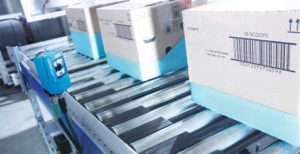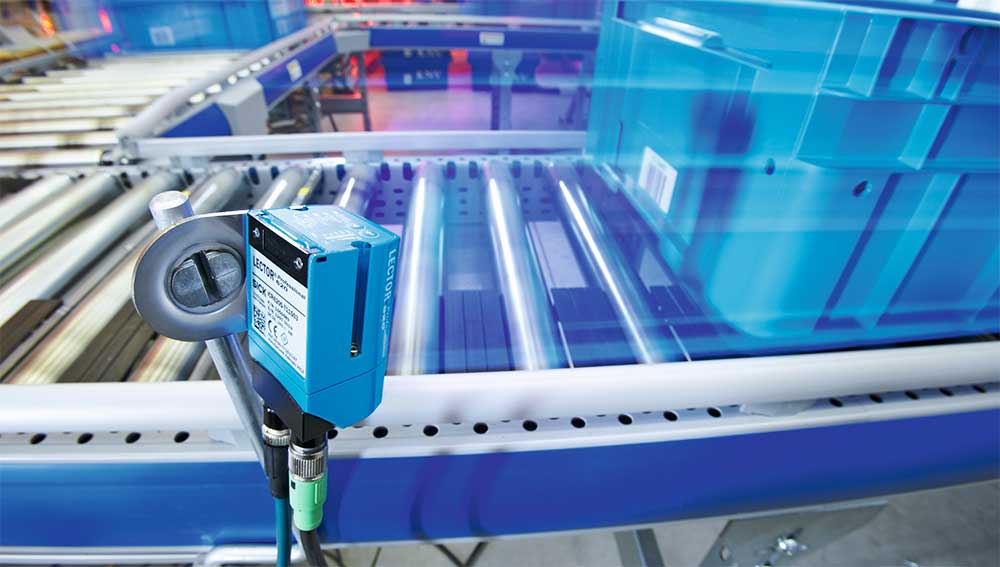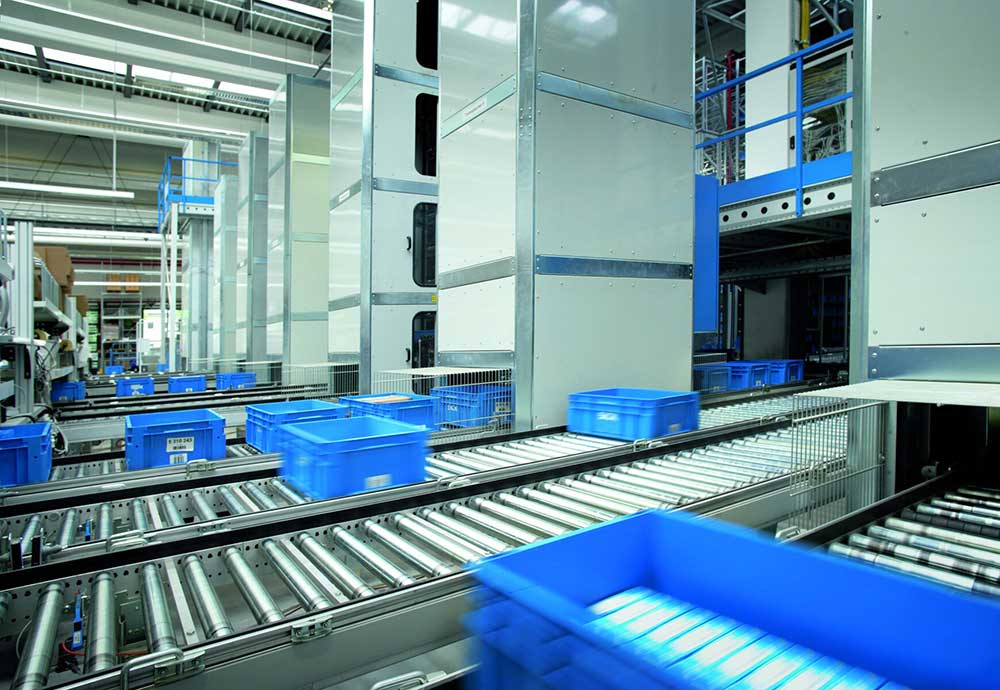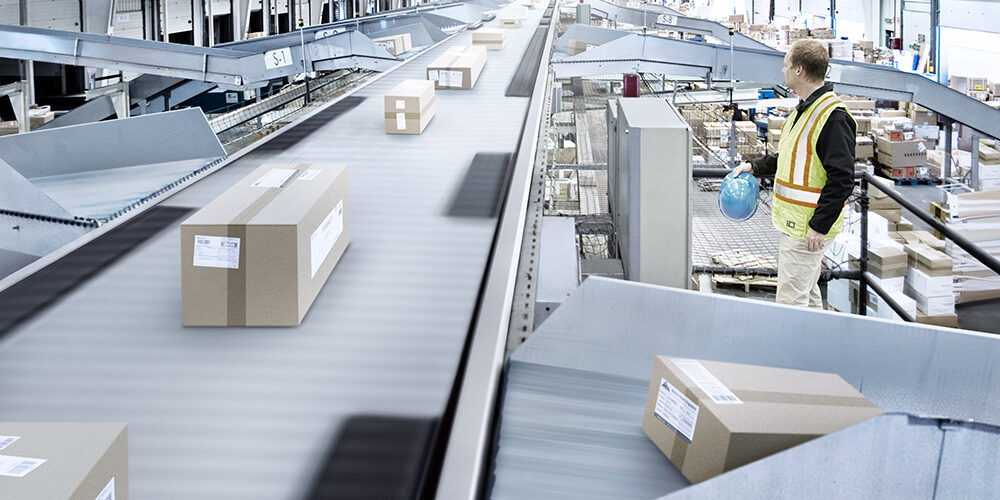Accurate 2D Barcode Reading with Vision-Based Solutions
The barcode was first used back in 1974, and one-dimensional codes still serve a crucial role in product identification and tracking. But in this era of high velocity e-commerce, just being able to scan a bar code isn’t enough for optimal performance.
To excel in today’s environment, there’s a growing need to digitize package characteristics as soon as goods enter a facility and use intelligent vision and sensing technologies to keep automated materials handling equipment running efficiently.
This shift in data capture and sensing best practices calls for a full toolbox of solutions and services, led by intelligent, vision-based readers that digitize factors like package condition, label orientation, and bar code read events. The idea is to have a digital, visual record of key points in your process so you can improve operations and ensure items get shipped quickly, efficiently, and in good condition, explained Tom Wik, national product manager, vision and identification, for SICK Inc.
Now people need more information than just the barcode ‘read’ itself. This added information provides value because ultimately it makes it easier to efficiently handle and ship products.
– Tom Wik, National Product Manager, Vision and Identification
 SICK is a global provider of intelligent industrial sensors whose broad portfolio includes vision-based readers, laser-based readers, and other sensor intelligence to support item detection, zone control, trace and trace, and dim/weigh/scan systems. SICK works directly with enterprises who need to support their material handling or production flow operations, as well as with integrators and vendors of automated equipment who want the best sensors and readers as part of their solutions. SICK’s intelligent vision and sensing portfolio addresses multiple functions, including:
SICK is a global provider of intelligent industrial sensors whose broad portfolio includes vision-based readers, laser-based readers, and other sensor intelligence to support item detection, zone control, trace and trace, and dim/weigh/scan systems. SICK works directly with enterprises who need to support their material handling or production flow operations, as well as with integrators and vendors of automated equipment who want the best sensors and readers as part of their solutions. SICK’s intelligent vision and sensing portfolio addresses multiple functions, including:
- Investigating the cause of no read events.
- Providing a visual record of package condition.
- Ensuring equipment such as conveyors, diverts, and sorters are working correctly.
- Providing high-resolution images of labels and bar codes, which can help determine if a printer is beginning to malfunction or needs maintenance.
- Rapid identification of damaged goods or difficult to convey/handle products in receiving so that these items can be routed quickly and correctly, thus avoid slowdowns or manual interventions later on.
- Integrated dimensioning and weighing to speed up cost-effective fulfillment.
- A full range of services and support.
At the core of these capabilities are vision-based readers that use camera technology to instantly “read” barcodes while also digitally capturing information about package attributes and read events. Vision technology is needed for two-dimensional codes such as PDF417, Data Matrix, or QR Codes, which increasingly are used for product identification or transport information.
Analyzing Digital Information

Vision-based readers such as products from SICK’s Lector Series are constantly capturing digital images at key points in industrial and materials handling processes. In some cases, this digital information is processed instantly “on the edge,” but the readers also are capable of sending images to a central data repository for later analysis using standard network protocols.
“What image archiving provides is a way to explain events that have happened within your processes,” Wik said. “Vision enables a database of images so that you can analyze and find the cause of ‘no-reads. It may be, for example, that labeling equipment is not putting labels on correctly. Or, maybe the box or envelope has moved around the conveyor more than expected. That extra information allows you to investigate and make your process more efficient.”
Vision-based readers solutions also provide for ease of use in terms of reliably getting accurate barcode reads, even when conditions change, such as smaller labels or if a SKU gets a new package. This is because vision-based readers naturally have a wider field of view than laser-based scanners. Additionally, a vision reader configuration on a line might actually involve multiple readers or a combination of reader types to give a very broad field for visual information capture. This results in a flexible or “forgiving” configuration that doesn’t have to be tweaked every time variables change.
Gaining a Bigger Field of View

“Vision gives you that bigger, two-dimensional field of view that takes into account different variables that can impact being able to capture the information you need,” Wik said. “We can mount vision readers above a conveyor scan point and reliably read codes and capture information without having to worry about repositioning whenever things change.”
SICK’s consultative sales approach and expert support services can guide user organizations or automation suppliers on how to create complete solutions for intelligent tracking, image archiving, and improvement of material handling systems.
Bruce Muir, SICK’s national sales and marketing manager, storage & conveyor, explains solutions might incorporate camera-based readers, sensors, dimensioning products, and software for image archiving and analysis. The goal is to apply enough technology specific to solving critical challenges while keeping the cost of the system down.
For example, on conveyors moving polybags, a critical issue is to be able to detect the leading and trailing edges of bagged items so that the conveyor is fully utilized. SICK’s array sensors, for example, use a light band to sense the leading and the trailing edges of polybags with great precision.
You need sensors that fit the application. It’s all about configuring what is best for a specific application in a way that keeps the solution affordable while also generating the information needed to ensure the performance of your automated systems.
– Bruce Muir, National Sales and Marketing Manager, Storage and Conveyor
Reducing No Read Events with Vision
The digital images generated by vision-based readers can be searched using software tools such as SICK’s Package Analytics. This software can be used to look for likely causes such as poorly printed or applied labels, or items that have shifted out of the field of view. This searchable repository is an example of how vision-based readers can be considered “intelligent” and thus provide added value.
For example, Package Analytics might show a label is in the wrong place on an item, or that a barcode’s contrast is degrading, pointing to the need to perform maintenance. A small tweak to industrial equipment, pointed out Wik, can cut down on no reads and the extra handling involved in fixing no reads.
“The information generated by vision readers allows an operation to make some improvements to their systems so that they can run their operation better,” Wik said.
![]() Want more information on intelligent vision solutions? Contact a SICK representative today at info@sick.com!
Want more information on intelligent vision solutions? Contact a SICK representative today at info@sick.com!





